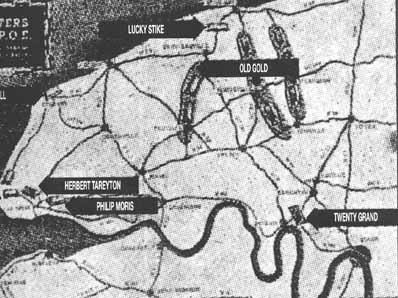 | ||
Wwii home movies 1945 marseille france us army cigarette camp
A Cigarette Camp was one of a number of temporary U.S. Army "tent cities" situated principally around the French ports of Le Havre and Marseilles following their respective captures in the wake of the Allied D-Day invasion in June, 1944, and Operation Dragoon in July, 1944.
Contents
- Wwii home movies 1945 marseille france us army cigarette camp
- Origin of names
- French camps
- Belgian camp
- Role shift
- References
Le Havre camps were located in what the Army designated the "Red Horse" staging area and named after popular brands, including Camps Lucky Strike, Old Gold, and Pall Mall. Another series of temporary camps set up at the same time in France was named after United States cities, referred to as "City Camps". A single Cigarette Camp, Tophat, was located in Antwerp, Belgium.
The Cigarette Camps were administered by the 89th Infantry Division, headquartered at Bois-Guillaume, near Rouen.
Origin of names
The names of cigarettes and cities were chosen for two reasons:
First, and primarily, for security. Referring to the camps without an indication of their geographical location went a long way to ensuring that the enemy would not know precisely where they were. Anybody eavesdropping or listening to radio traffic would think that cigarettes were being discussed or the camp was stateside, especially regarding the city camps.
Secondly, there was a subtle psychological reason, the premise being that troops heading into battle wouldn't mind staying at a place where cigarettes must be plentiful and troops about to depart for combat would be somehow comforted in places with familiar names of cities back home (Camp Atlanta, Camp Baltimore, Camp New York, and Camp Pittsburgh, among others).
The camps varied widely in size, from around 2,000 in capacity to nearly 60,000 at the largest of the "Big Three", Camps Philip Morris, Old Gold, and Lucky Strike.
French camps
The nine Cigarette Camps included:
Belgian camp
Role shift
By war's end both Cigarette and City camps' roles had shifted from gateways to combat to staging GI's for repatriation to the States, processing liberated American POWs, and temporarily confining German POWs.
Post-war, many of the camps survived with yet new roles, including housing for displaced persons at least into the mid-1950s.
